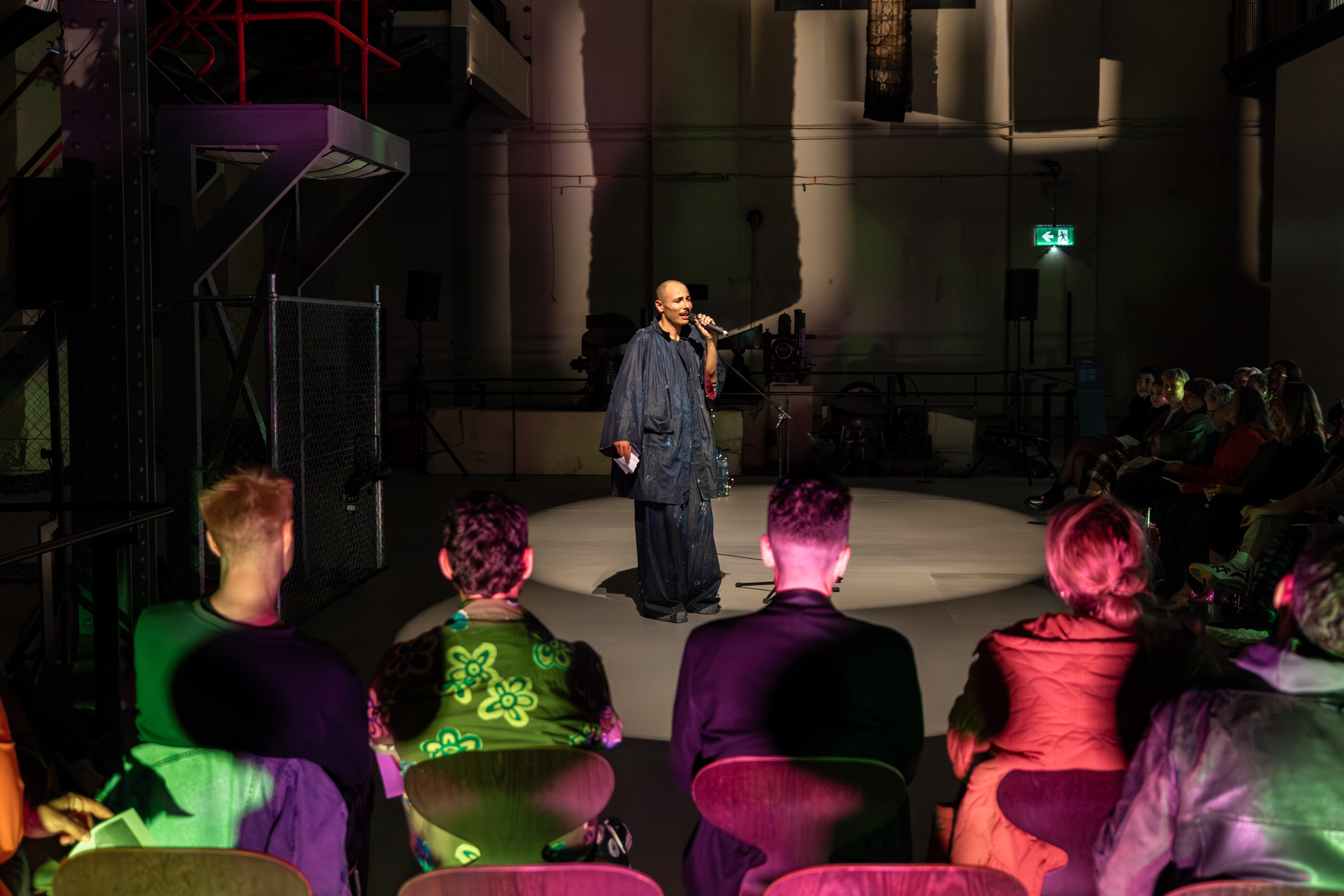The show had started and I was stuck in the rain, waiting for my Uber to come. Arriving late, I rushed into the venue where the staff assured me that they’d find my chairs quickly. It was then I heard the lovely and talented star and playwright, Tommy Misa, command the attention of the room and say, “two seats are available in front”. I quietly tiptoed my way to the front, succumbing to a short-lived embarrassment. Thankfully, I only missed the first five minutes of the act and quickly became immersed in the artful one-man play.
Presented by Performance Space and the Biennale of Sydney at the White Bay Power station, Working Class Clown is a one-man show which tells the story of a queer Fa’afafine, as inspired from Misa’s own experiences. This story provided an intimate and cultural insight into the life of men who are raised as and identify as women in Samoa, as Misa played around with the stereotype of the ‘town fool’ to speak truth to power and gender dynamics of his society.
Stylistically, Working Class Clown takes inspiration from Samoan political satire and Fale Aitu, where a performer is possessed by spirits, depicting an interplay between reality, farce, and absurdity. A direct inspiration can be seen in one part of the act, where he seemingly summons his old high-school teachers in a flashback. Moreover, this inspiration seems to be the key narrative of the performance, as it was heavily inspired by his late father Mefiposeta Misa, whom Misa noted to be “the first person to make me laugh and could find the play in absolutely anything”. In a sense, the entire performance was ‘guided’ by the spirit of a clown,—that is Misa’s father.
Having read the concept, I was expecting a very conceptual performance, yet it was a timeless and grounded narrative about gratitude and living life to the fullest. Instead of a convoluted and academic commentary on the working class community, my expectations were subverted in that the story was kept personable. As such, Misa’s performance art is not exclusively catered to intellectuals and critics: it is for the people. While the performance was very experimental—with the grandeur gestures and explosive moments through the way he tells the story, the essence, the story itself was relatable. Thus, viewers can follow the protagonist’s journey without losing their focus on the theatricality and visual storytelling.
Costuming also told a story, from the silhouette to the textiles, making it clear that the team had thought about each element thoroughly. For example, the silhouette of the denim oversized shirt and pants complimented the energetic choreography. The blouse eerily resembled the white blouse of a clown, enhanced further by denim, a textile typically associated with workers.
What made this one-man show an artistic performance was Misa’s unique ability to incorporate varied body movement and facial expressions, enhancing his stage presence and domination of the space. His body was controlled — often stiff and dynamic at the same time — as if reminding viewers that he’s only a being, controlled by something unseen, especially highlighted in onene moment where Misa stopped, tensing and contorting his body in a position which looked marionette-like all the while strategically aligning with the lighting. This was paired with a very unique humour, allowing for the performance to ground itself as the show conveyed the everyday struggle of living.
Working Class Clown is a memorable work of performance art, for both the critic and general public. There was beauty in the relatability, from the modernised costume adorning the actor’s body to the choice of humour. In short, it is funny and unapologetically queer. And just as Misa reminded us, in every “wee wee” comes a “ha ha” afterwards, and our lives would be so much better if we could find and cherish the sparks of laughter and joy within it.





